LINC-NIRVANA Adaptive Optics
Single Conjugate Adaptive Optics
While conventional adaptive optics (AO) can now routinely deliver high-impact science, the technique suffers from limited sky coverage and a very small field-of-view. To overcome these difficulties, the LINC-NIRVANA instrument employs Multi-Conjugate Adaptive Optics (MCAO), a method for sensing and correcting a much wider, 3-dimensional volume of turbulence.
The figure to the right illustrates the basic concept. The atmosphere consists of multiple layers of turbulence, which distort the incoming wavefronts and reduce the achievable spatial resolution of the telescope. At near-infrared wavelengths (1-2.5 µm), this can worsen the diameter of the delivered stellar images by a factor of 10-20. A reference object, either a natural guide star or a laser beam, near the scientific field of view can provide sufficient information to correct the turbulence.
Unfortunately, however, as the distance between the reference object and the science field increases, the amount of overlap between the turbulence affecting the two sources decreases. In particular, the sampling of the higher layers in the atmosphere degrades rapidly. The end result of this is that a traditional AO system loses 50% of its on-axis performance only 10 arcseconds away.
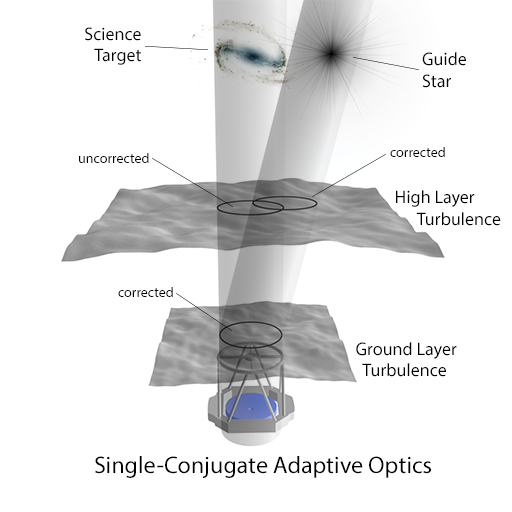
The performance of traditional adaptive optics degrades as the angle between the science target and the guide star increases. This leads to poor images and significant variations within the field of view.
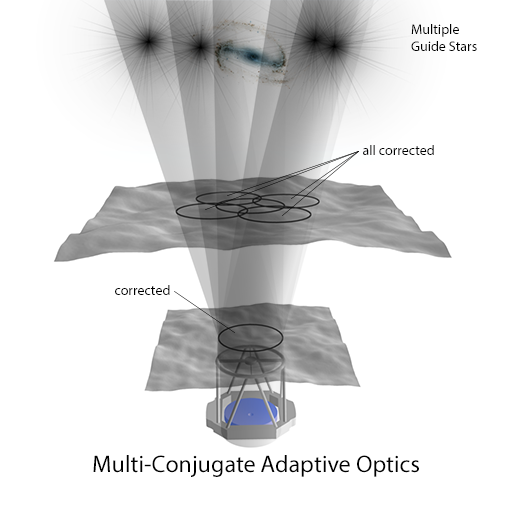
The performance of traditional adaptive optics degrades as the angle between the science target and the guide star increases. This leads to poor images and significant variations within the field of view.
Multi-Conjugate Adaptive Optics
Multi-Conjugate Adaptive Optics solves this problem by using several reference objects distributed over the field of view. LINC-NIRVANA implements the so-called “layer-oriented, natural guide star, multiple field of view, pyramid wavefront sensing” approach to MCAO.
Layer Oriented is a shorthand way of saying that LN employs multiple deformable mirrors (DM), each focused (“conjugated”) to a separate layer of turbulence. The control loops operate in a pure, sequential cascade, meaning that the layers are corrected one after the other, and each loop is independent. This provides greater robustness (see figure below).
LN uses Natural Guide Stars as reference objects. This eliminates the technical, bureaucratic, and regulatory complexity of operating a high-powered laser in an environment filled with aircraft and satellites. The LN MCAO system exploits optical co-addition of the starlight, thereby reducing the impact of detector readout noise and increasing sensitivity.
The Multiple Field-of-View approach increases sky coverage by taking advantage of the fact that, for lower atmospheric layers, starlight from a larger range of sky angles samples the same atmospheric patch (see first figure). In LINC-NIRVANA, the ground layer DM receives input from a six-arcminute field, while the high layer loop samples a two-arcminute field. Pyramid Wavefront Sensing offers improved performance compared to traditional techniques, since the responsiveness of the wavefront sensor (WFS) increases as the image quality gets better. This can improve the overall sensitivity of the system by a factor of two or more.
LINC-NIRVANA Adaptive Optics Hardware
The LINC-NIRVANA MCAO system employs two wavefront sensors and two deformable mirrors per telescope. For each telescope, the ground-layer WFS collects light from up to 12 natural guide stars and drives the 672-actuator adaptive secondary mirror. The high-layer WFS samples up to 8 natural stars and drives a 349-actuator DM mounted on the LN optical bench.

One of the two Ground-Layer Wavefront sensors. This instrument measures the atmospheric turbulence approximately 100 meters above the telescope using the combined light of up to 12 natural guide stars.
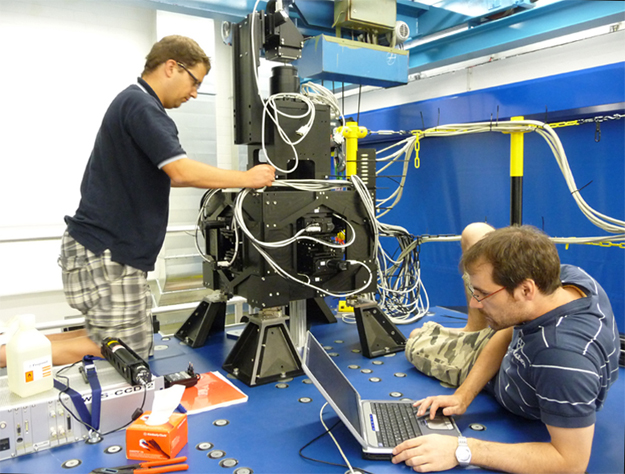
One of the two Mid-High Layer Wavefront sensors. The team is performing an on-bench check of the sensor prior to flexure testing (see image to right).
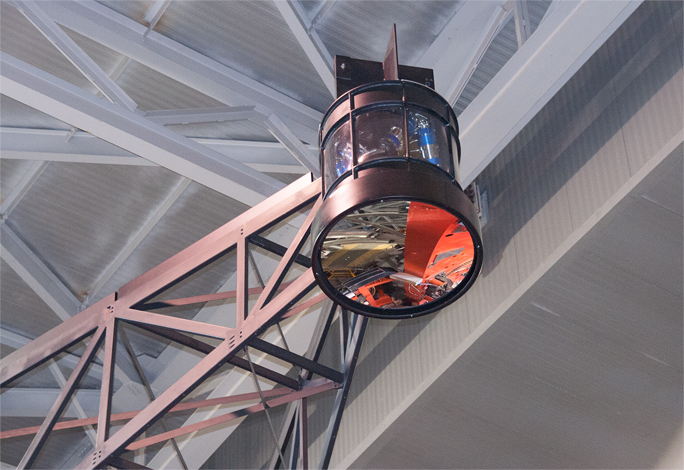
The LBT adaptive secondary mirrrors contain 672 voice coil actuators. Unlike most large telescopes, the LBT secondary mirrors are concave, operating in so-called “Gregorian” configuration. This arrangement is ideal for using an adaptive secondary to correct ground layer turbulence.
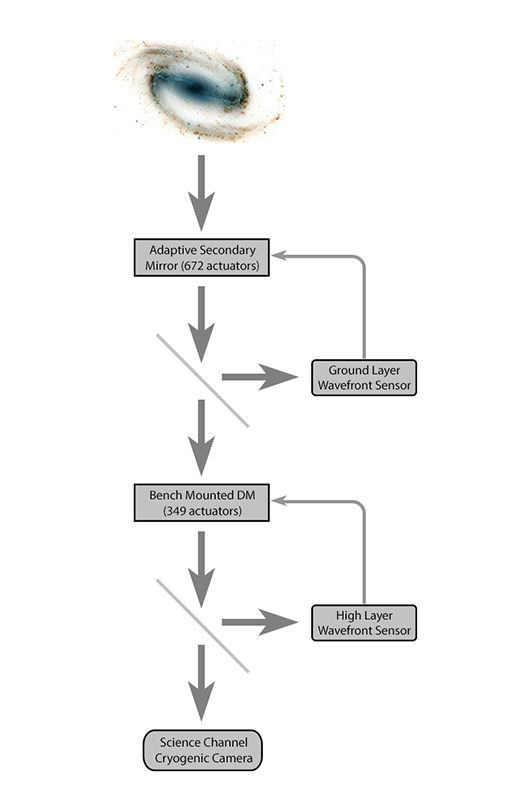
LINC-NIRVANA adaptive optics architecture. The two, layer-oriented, control loops operate in a sequential cascade.

LFlexure testing of the Mid-High Wavefront Sensor. The entire optical bench can tip to the “horizon” while the team monitors the performance of the sensor. All major LN subsystems undergo such testing prior to final integration.

LINC-NIRVANA uses a pair of Xinetics 349-actuator deformable mirrors to correct high layer turbulence. The design of LN places these mirrors optically at an altitude of 7.1 km above the telescope.
